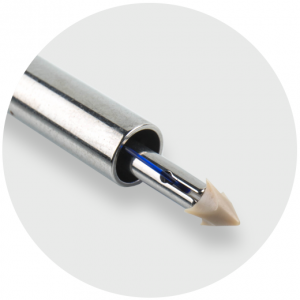State of the art transvaginal sacrospinous fixation system
The Anchorsure® system is a straight and thin device for a safe anchor placement at the sacrospinous ligament. The Anchorsure® system delivers a small anchor through the sacrospinous ligament providing a strong fixation and minimising potential pain to the patient. It can be used for spinous fixation in the treatment of vaginal prolapse after hysterectomy (according to Amreich – Richter). Other forms of fixation may need tight sutures knots around the ligament, that may compromise neurovascular structures.

CONTACT US TODAY

